Have you heard about the story of Pulau Sekudu? Or the legend of why the tiny island near Chek Jawa is named after a frog? Let me show you.
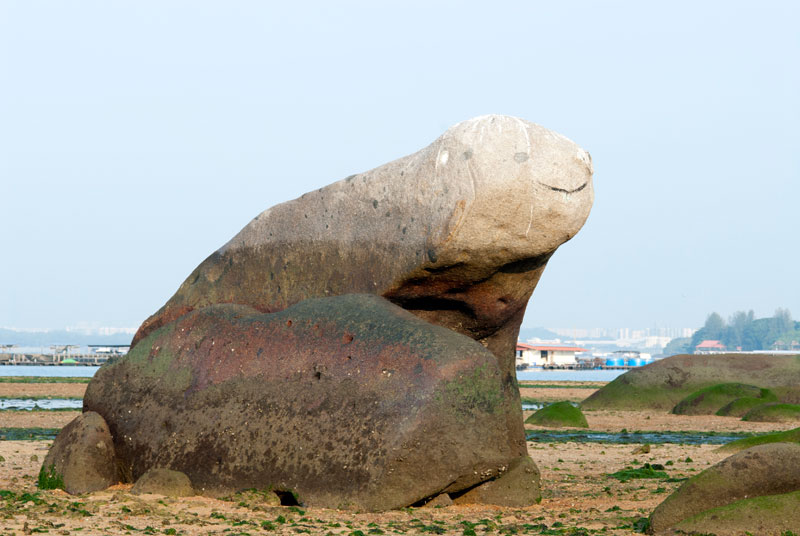
- Happy frog rock on Pulau Sekudu
Though it is not very convincing, but I am sure with some creative thinking, you will be able to see a happy frog looking at you. The eye spots on this rock is not natural and it was painted on by fishermen who used to come here to fish in the past. Now, the island is under restricted access and you will need to obtain a permit.
Here is the other side of the frog rock. It looks like the frog has a moustache and missing a top hat.
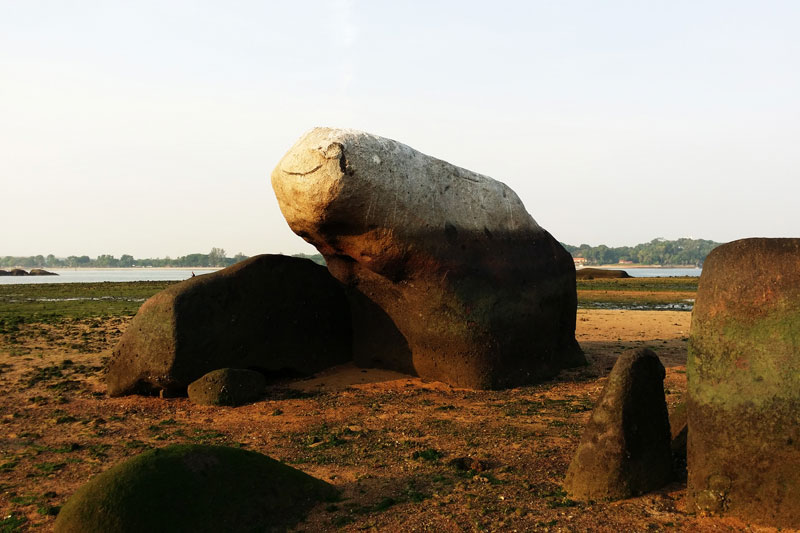
The highlight of the trip for me would definitely be the hollow-cheeked stonefish (Synanceia horrida) spotted by Germaine from NParks. It was her first time visiting Pulau Sekudu, have been warned many times from many people about stonefish since her undergrad years studying horseshoe crabs and today, she found the stonefish. In fact, there were two stonefish today within stone throw from each other.
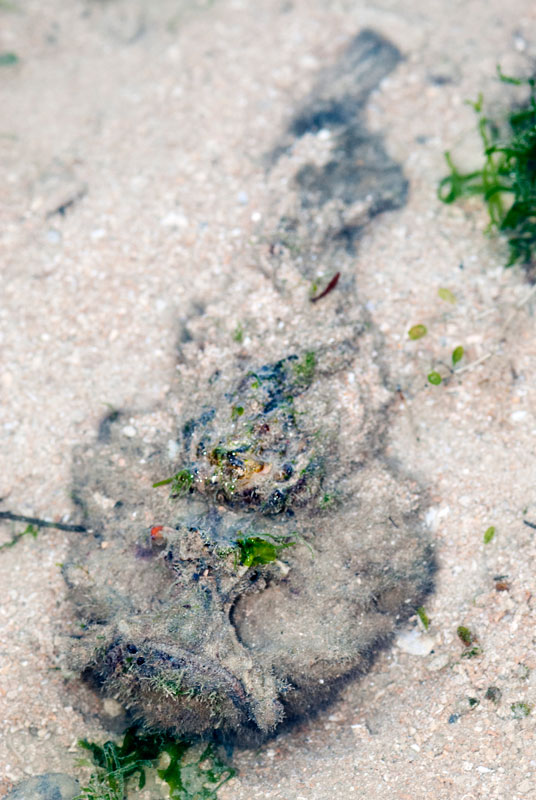
- Stonefish 1
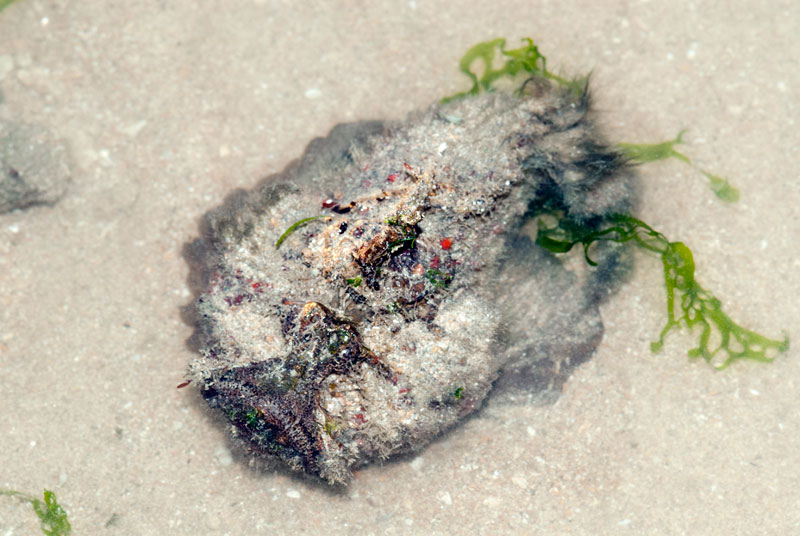
- Stonefish 2, slightly smaller
Obviously the stonefish weren't not happy to see us while we got excited over them. Their grumpy faces remain as grumpy as ever. The spotted of the stonefish actually reminded us to be careful when walking on the reefs. No where is safe and as you can see, the stonefish really looks like a piece of ordinary stone. Beware, they have 13 dorsal fin spines, acting like hypodermic needles that injects venom when you step on them. It is a very painful experience.
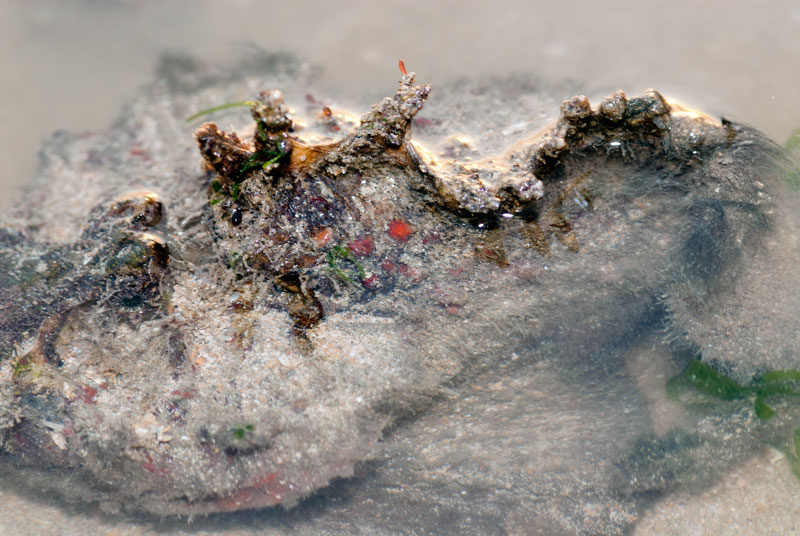
- Raised dorsal fin spines
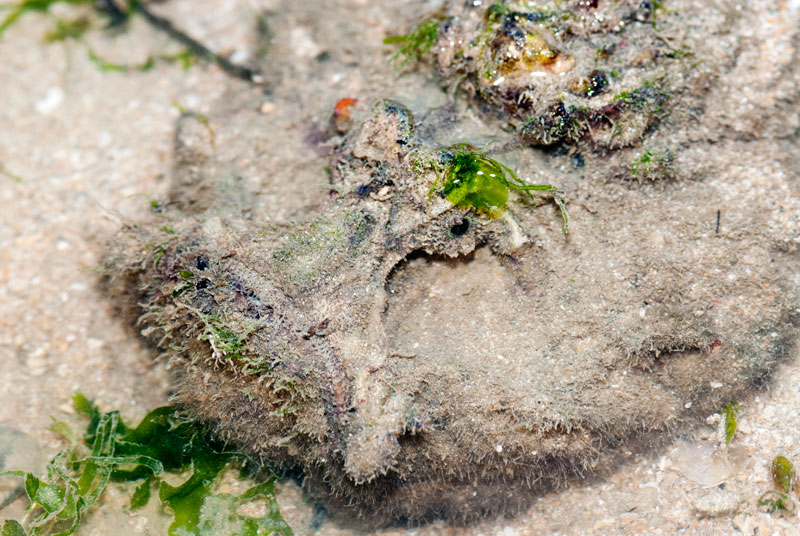
- Stonefish is one very grumpy fish, staying very still and looks exactly like a rock on the reef.
Arriving pre-dawn, I did my usual route of going south then east round the island. As usual, the sea lettuce seaweed is every where on the island and it hides many tiny animals such as crabs, amphipods, isopods and many swimming anemones. The thick layer of seaweed definitely provided a good hiding place for these tiny animals.
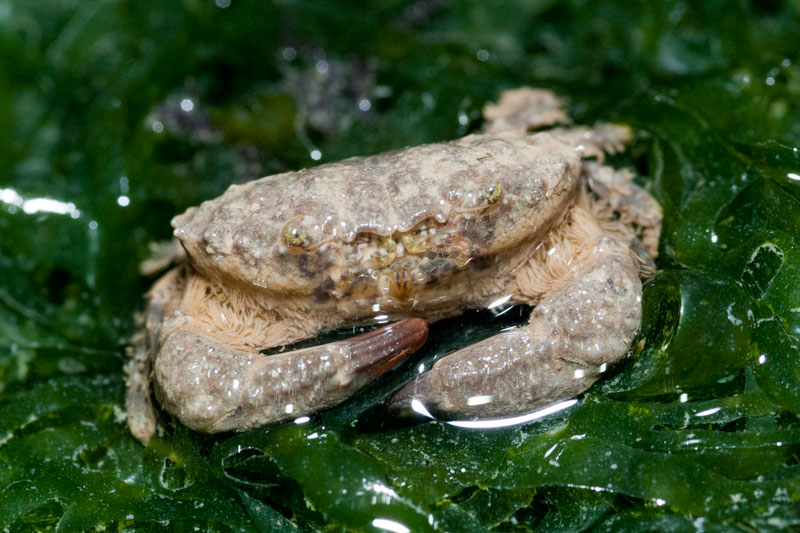
- Juvenile crab?
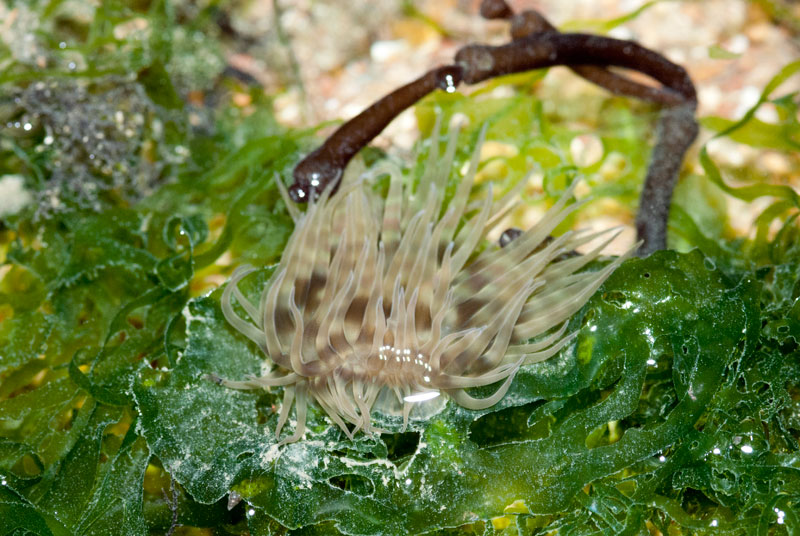
- Swimming anemone (Boloceroides mcmurrichi)
In these seaweed pools, you can still find other animals such as sea cucumbers, bigger crabs, snapping shrimps.
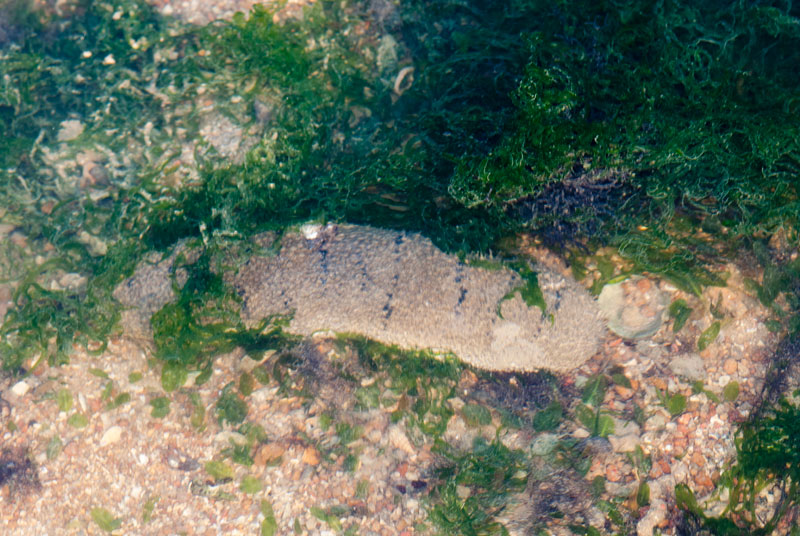
- Garlic bread sea cucumber (Holothuria scabra)
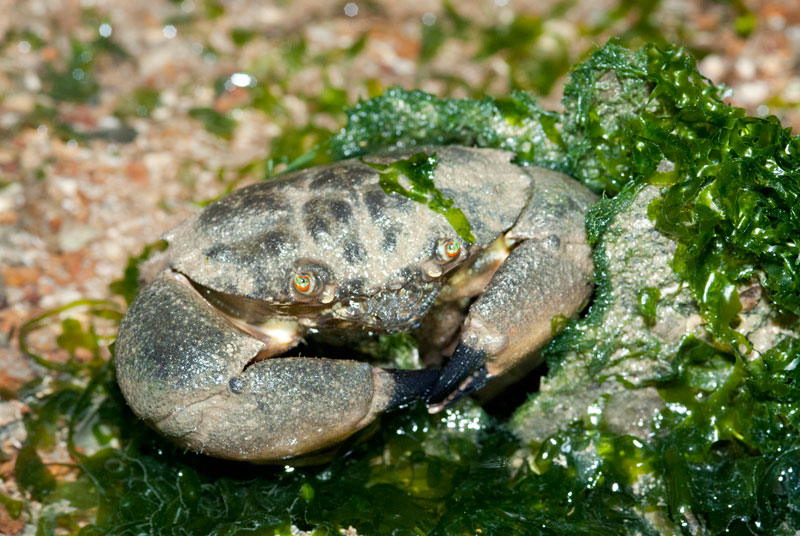
- Stone crab (Myomenippe hardwickii)
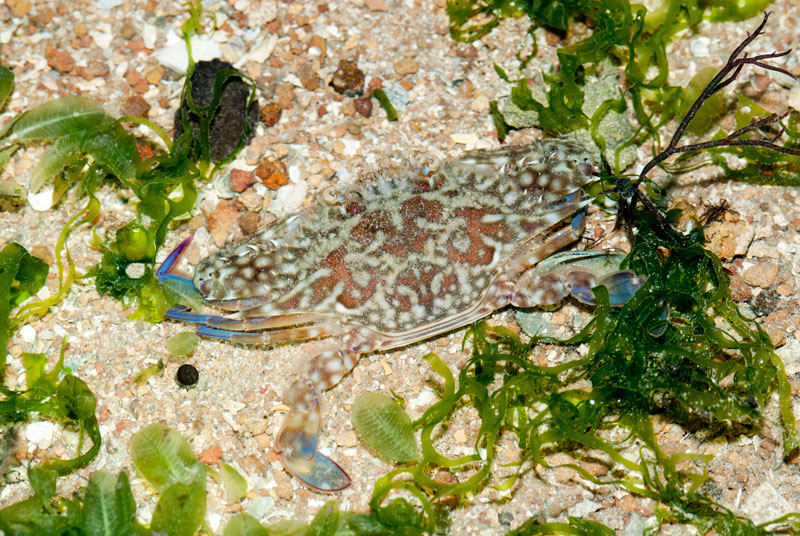
- Flower crab (Portunus pelagicus)
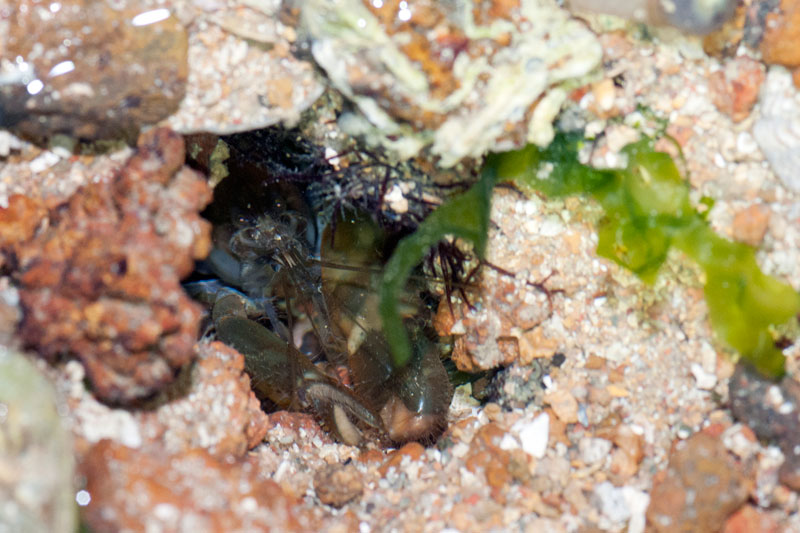
- Snapping shrimp at burrow entrance
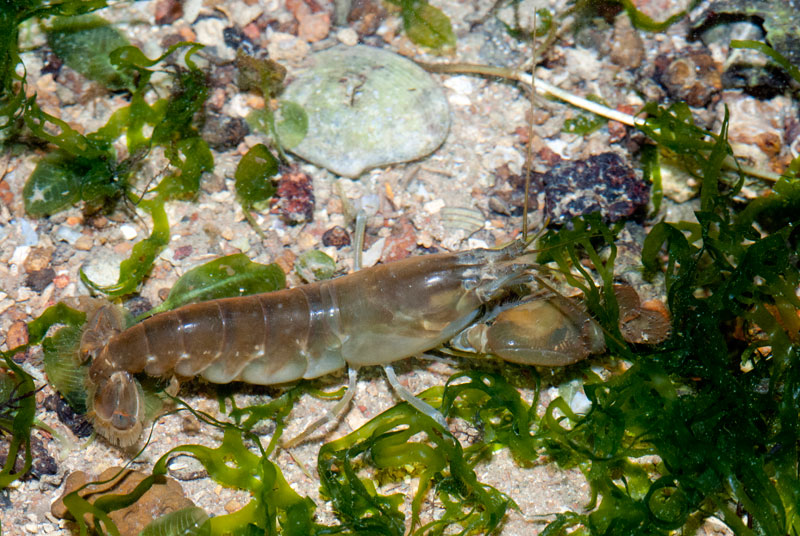
- Snapping shrimp
I did not get to see the Sekudu knobbly sea stars today, which a few of my friends did encounter, but I came across one orange crown sea star, one painted sand star and a few biscuit sea stars.
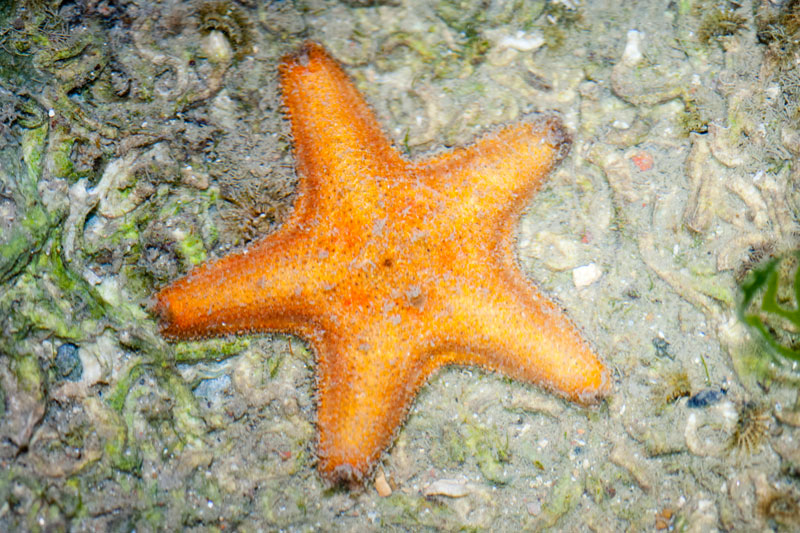
- Crown sea star (Aquilonastra coronata)
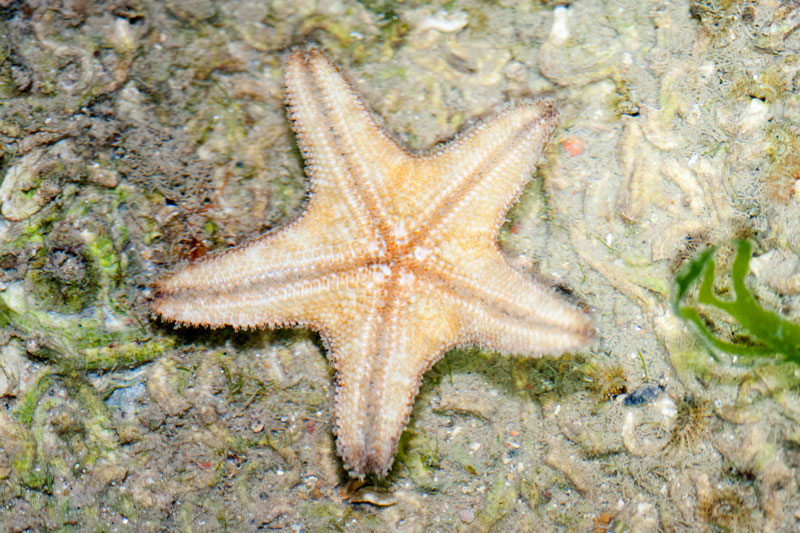
- Crown sea star, underside
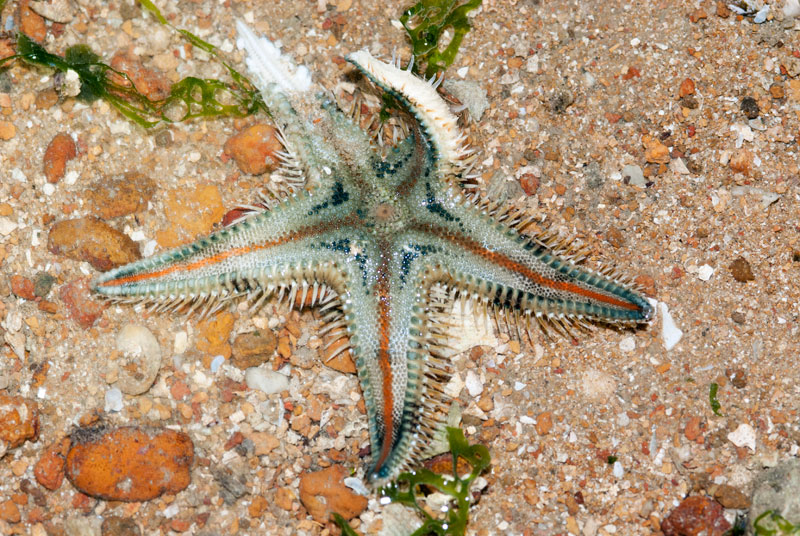
- Rather injured looking painted sand star (Astropecten sp.)
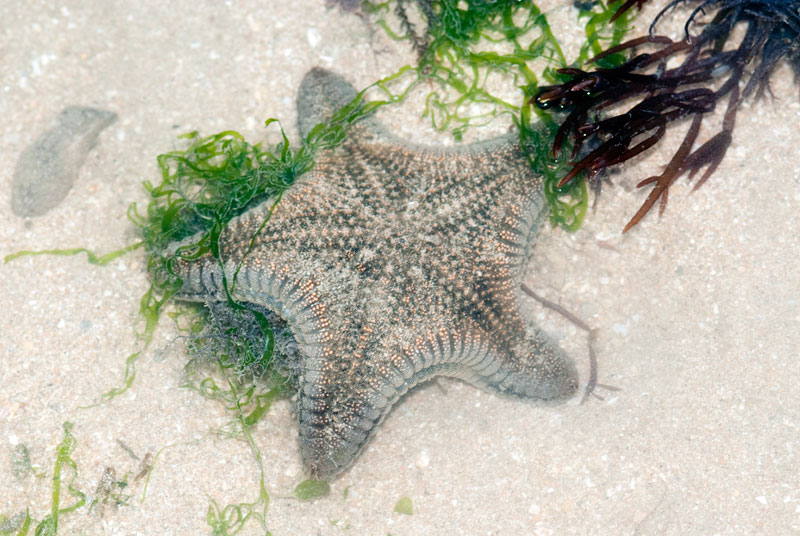
- Biscuit sea star (Goniodiscaster scaber)
There were a few orange-striped hermit crabs around.
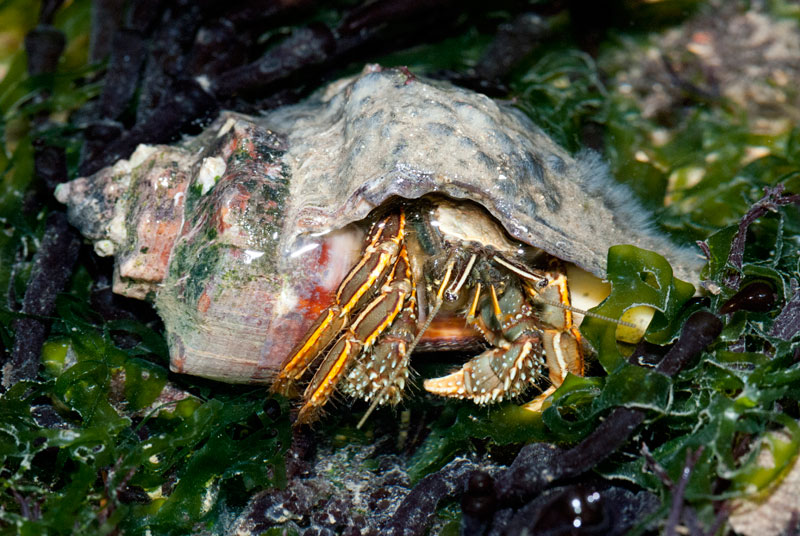
- Orange-striped hermit crab
Oh look, a yellow cuskeel (Dinematichthys iluocoteoides). This fish is usually very skittish and swims into hiding very quickly but today, the fish was rather friendly and stay around for some time before it decided to hide. The cuskeel looks very graceful when it swims.
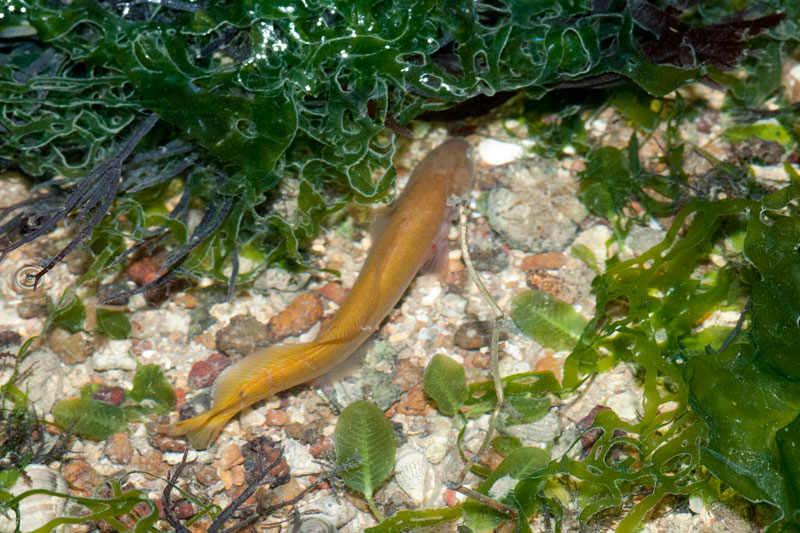
- Yellow cuskeel, when spotted
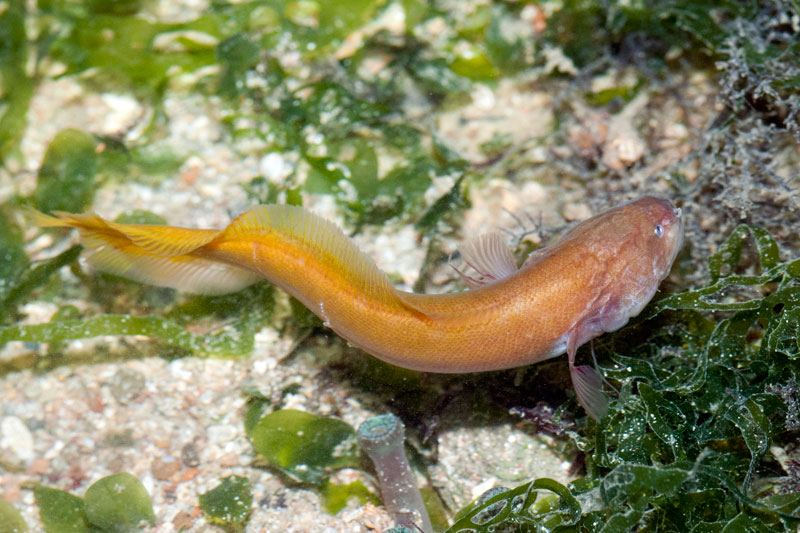
- Closer look at the fish
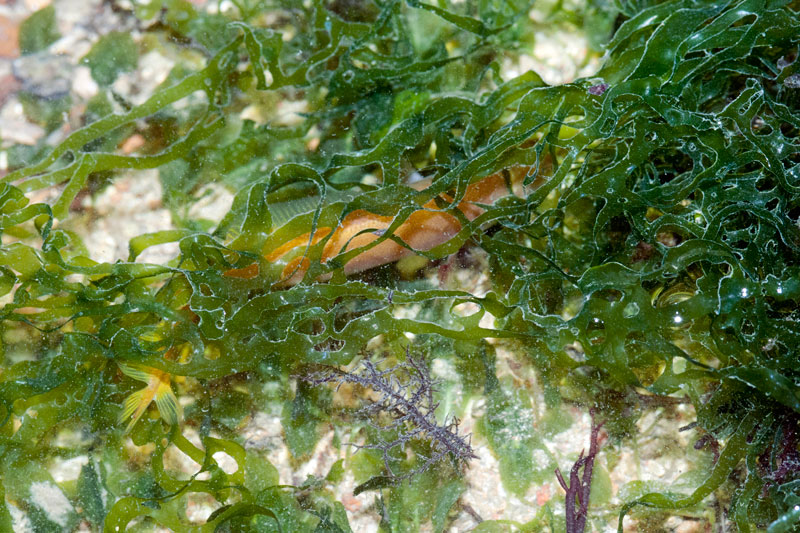
- Hiding cuskeel
This predawn trip works till after sunrise and all of us had enjoyed the golden hour moment on Pulau Sekudu with beautiful background of Chek Jawa, Pulau Tekong and Pengarang, Johor, with arriving planes.
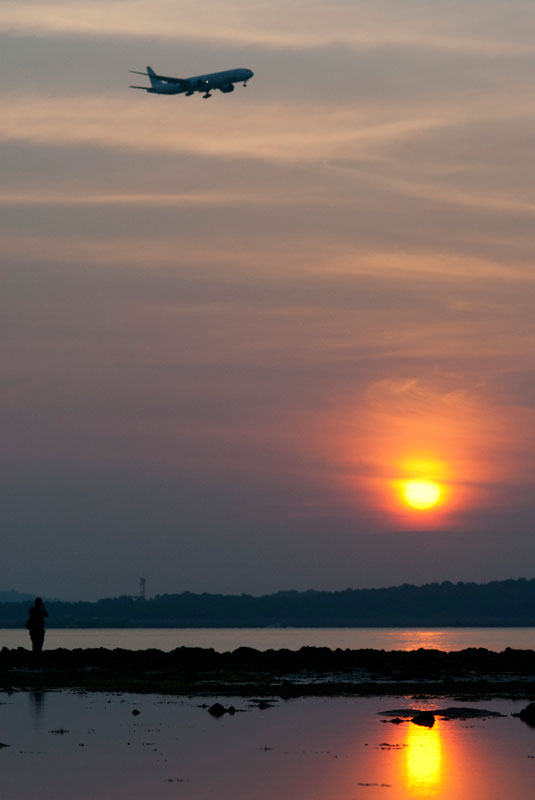
- Sunrise on Pulau Sekudu
After capturing that beautiful moment, which we did not enjoy yesterday at Chek Jawa, we continued our survey.
The noble volutes (Cymbiola nobilis) seems to be in egg laying season as they were seen laying eggs yesterday at Chek Jawa and today at Pulau Sekudu.
The noble volutes (Cymbiola nobilis) seems to be in egg laying season as they were seen laying eggs yesterday at Chek Jawa and today at Pulau Sekudu.
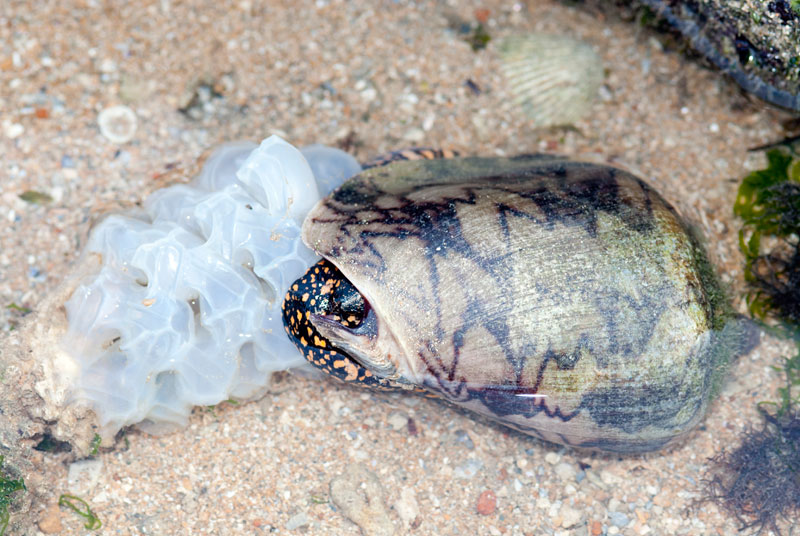
- Noble volute laying eggs
Chay Hoon showed us this beautiful nudibranch, which we also saw it on our previous survey trip last year.
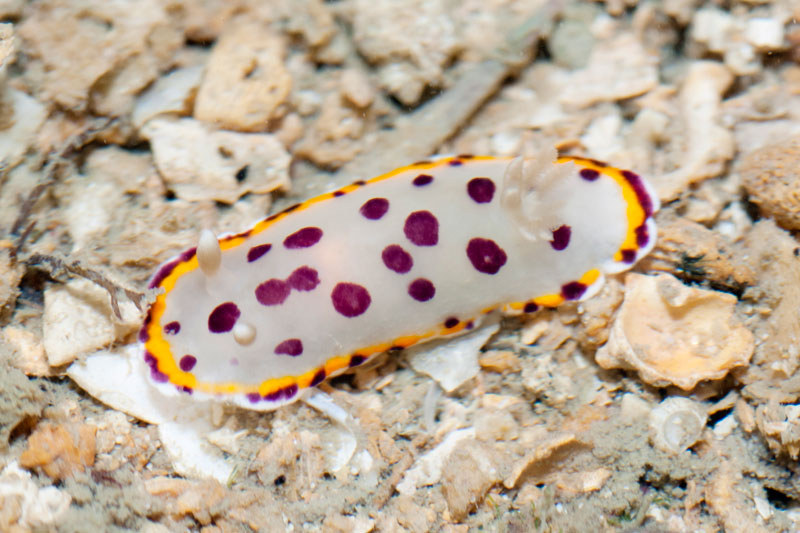
- Cow nudibranch (Goniobranchus tumulifera)
With solitary fan green seaweed around, there will bound to be some super tiny strawberry slug (Coastasiella sp.) and I found one. They are really difficult to photograph.
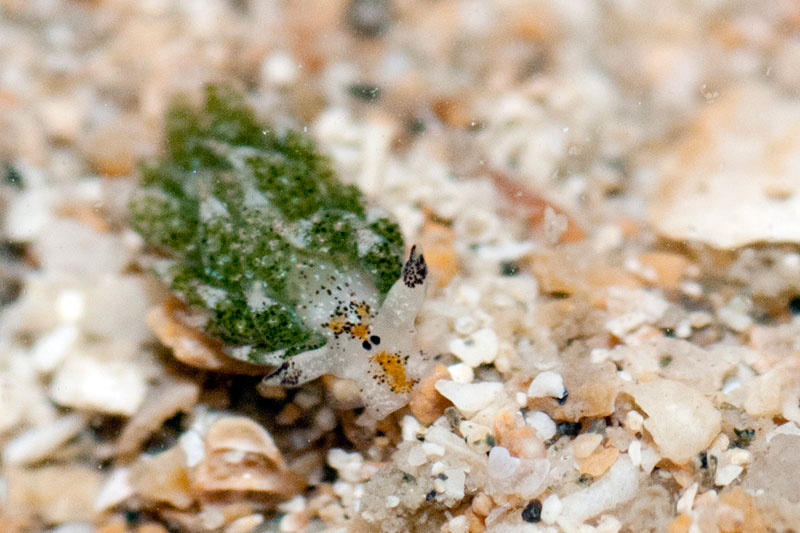
- Strawberry slug
On the high water mark, there are a few mangrove trees and some interesting snails can be found along the branches or leaves.
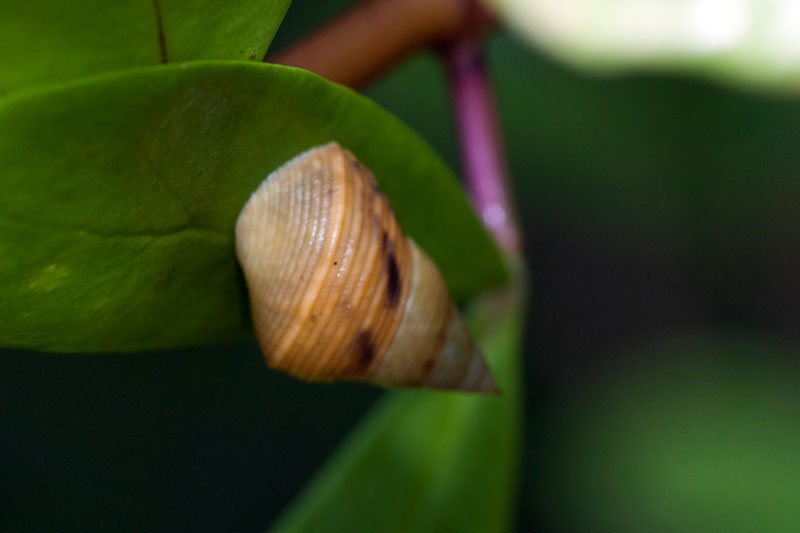
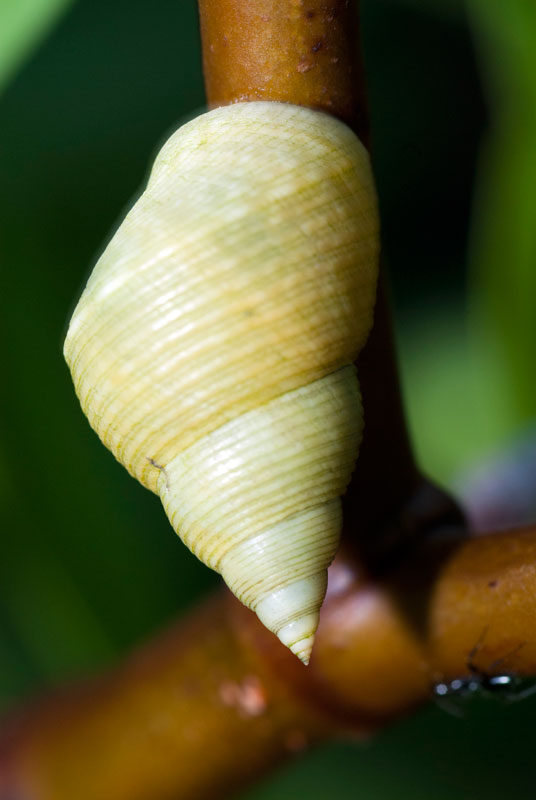
It is really a wonderful day at Pulau Sekudu, with beautiful sunrise and the special find of two stonefish. This trip is made possible with permission from NParks and I am grateful for the opportunity. Also thanks to Chay Hoon for the transport arrangements.
Until we meet again, Pulau Sekudu!
Posts by others:
Ria - Sunrise survey of Pulau SekuduKok Sheng on his FB
Marcus on his FBRussel on his FB
Ivan on his FB
Ria - Sunrise survey of Pulau SekuduKok Sheng on his FB
Marcus on his FBRussel on his FB
Ivan on his FB
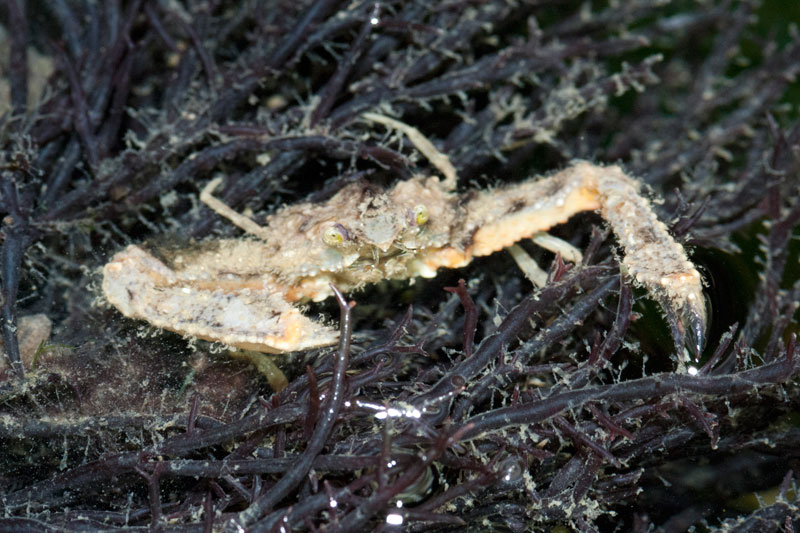
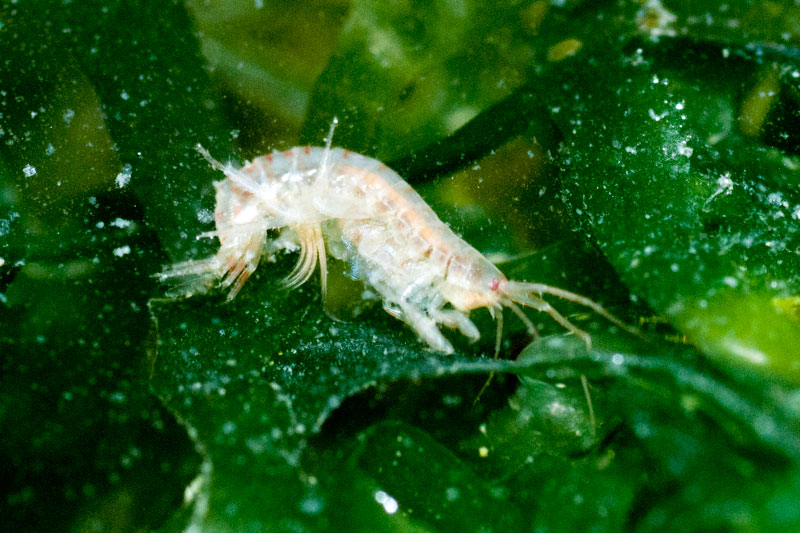
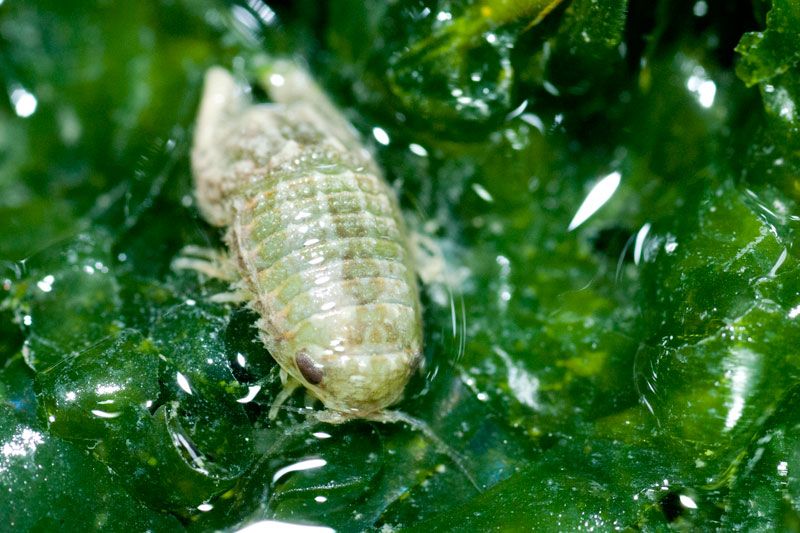
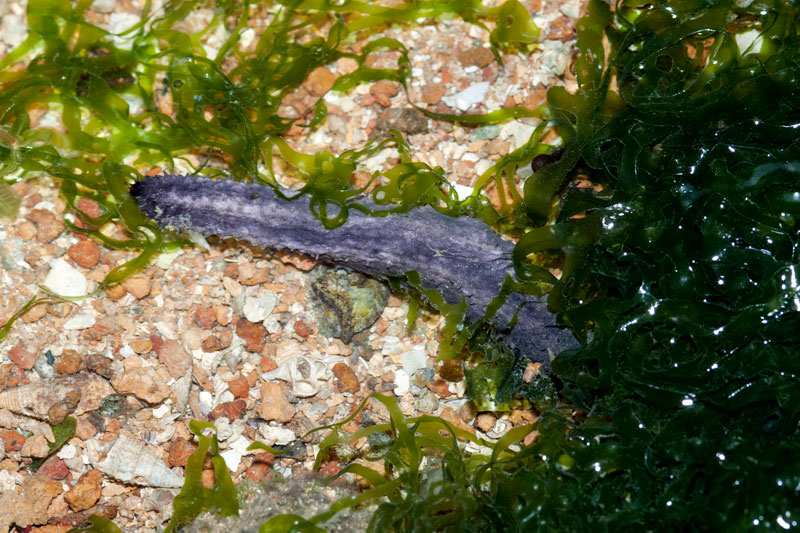
No comments:
Post a Comment